One of the toughest parts of growing vegetables and fruits is deciding just what to grow. A good place to start is with favorites from beans to zucchinis, all of which have stood the test of time in edible gardens. Novice gardeners can begin with tried-and-true favorites, while those with more experience can experiment with new varieties. No matter what you plant, you’ll be guaranteed the goodness of fresh-from-the-garden produce.
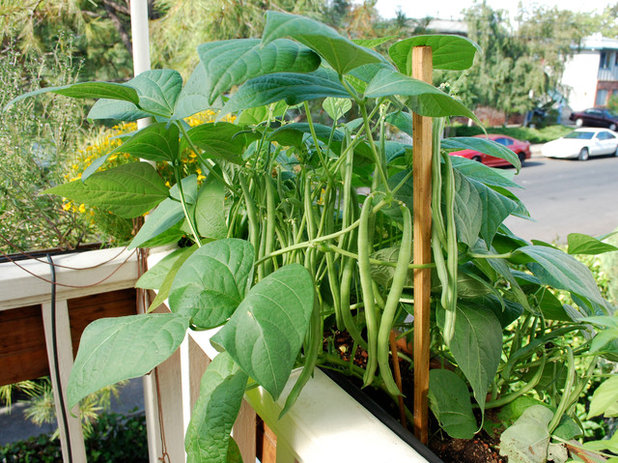
Steve Masley Consulting and Design
1. Beans
When to plant: Mid-to-late spring into summer when soil temperature reaches 60 to 70 degrees Fahrenheit (15.6 to 21.1 degrees Celsius)
When to harvest: Snap beans are ready in 45 to 80 days after sowing; others can be picked from 65 to 100 days.
The bean family is large and thriving. Although most people think of snap beans, also called green or string beans, other options include “shellies” (dry beans that are shelled and eaten when green), dry beans, lima beans and soybeans.
Beans do best in loose soil with full sun and regular water; the soil should be moist but not soggy. Insects and critters can be a problem, so row covers and netting may be necessary.
Learn more about growing beans
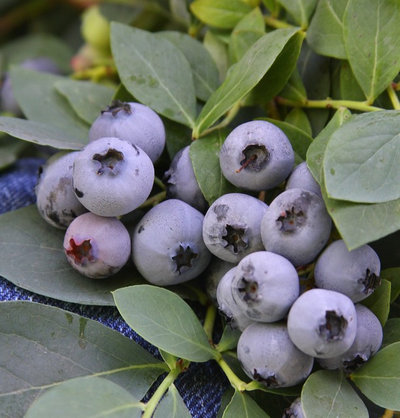
Monrovia
2. Blueberries
When to plant: Early spring in cold-winter climates; fall through early spring in warm-winter climates
When to harvest: After the first year when berries turn color
Blueberries are equally at home in an edible garden, where they will provide years of berries for eating, and in a garden border, where the perennial shrubs can be tucked in with similar plants and provide a burst of fall color.
Because they’re perennials, look for a permanent spot in the garden. Blueberries want full sun and do best with regular water, about 1 inch to 2 inches per week. For best results, create watering basins or furrows around the plant or plants. And, as hard as it may be, strip each bush of all berries the first year so that the plant can concentrate on growth rather than production. It will reward you with more berries in years to come.
Once established, blueberries are fairly easy to care for — keeping the birds from devouring your crop will be the most troublesome problem. Harvest once the berries are fully colored and sweet.
Learn more about growing blueberries
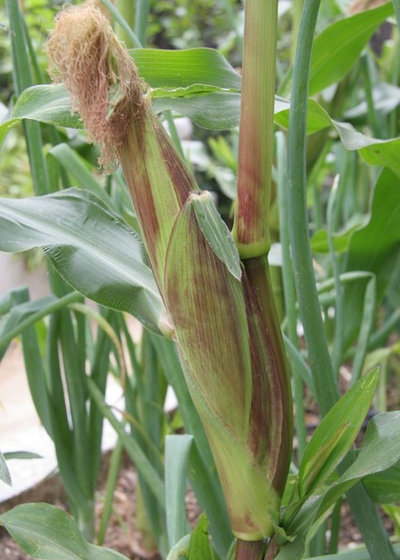
ecocentrix landscape architecture
3. Corn
When to plant: Two weeks after the last frost date and when soil temperature is 55 degrees Fahrenheit (12.8 degrees Celsius)
When to harvest: In 50 to 100 days
Fresh-from-the-garden corn is a treat that’s impossible to replicate, even with farmers market corn. It’s also fun to watch grow — it shoots up quickly, so there’s an instant reward, even if you have to wait to harvest.
Choose a site with rich, well-drained soil (amend if you need to) that gets full sun for eight hours a day, then plant in blocks or hills. Provide regular water so that the soil is moist but not soggy, and water deeply once the silks form. Feed periodically during the growing season.
Corn is ready to harvest about three weeks after the silks appear. Once the silks turn brown, peel back a bit of husk and pinch a kernel. If the juice is milky, the ear is ready. For the best eating, husk the corn and pop it immediately into a pot of boiling water.
Learn more about growing corn
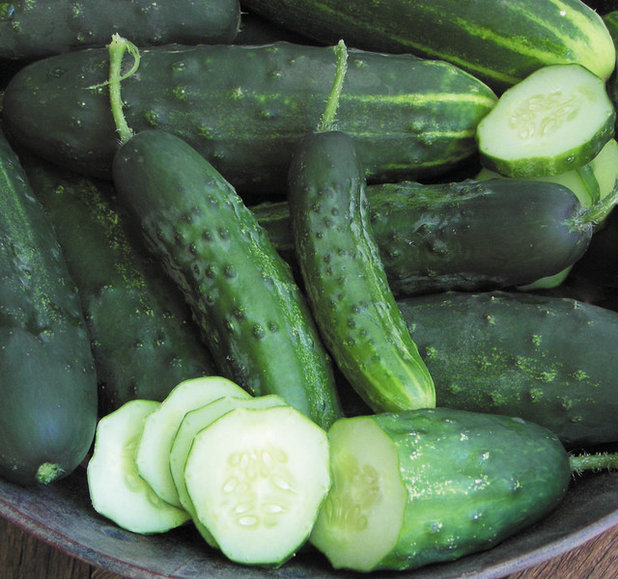
seedsavers.org
4. Cucumbers
When to plant: Sow seeds or set out plants once all danger of frost is past and soil temperature reaches 60 degrees Fahrenheit (15.6 degrees Celsius).
When to harvest: In 50 to 80 days
Cucumbers offer gardeners, especially those in a cool or short-summer climate, a couple of advantages. First, they don’t need as warm a soil temperature as many other summer vegetable crops. Second, they’re ideal for growing up trellises and fences, adding vertical interest to what can otherwise be a very horizontal growing space.
Plant in full sun and fertile, well-drained soil. Cucumbers need constant moisture but are prone to fungal problems if the leaves are wet, so it’s best to plant them in hills with watering basins or in rows with watering furrows alongside. Set up supports when you plant. Fertilize when the plants start to grow and then about a month later.
Harvest once the fruits reach a usable size. It’s best to pick them when young since the older and larger ones become seedy. Cucumbers are prolific producers once they get started, so you should have a summerlong crop.
Learn more about growing cucumbers
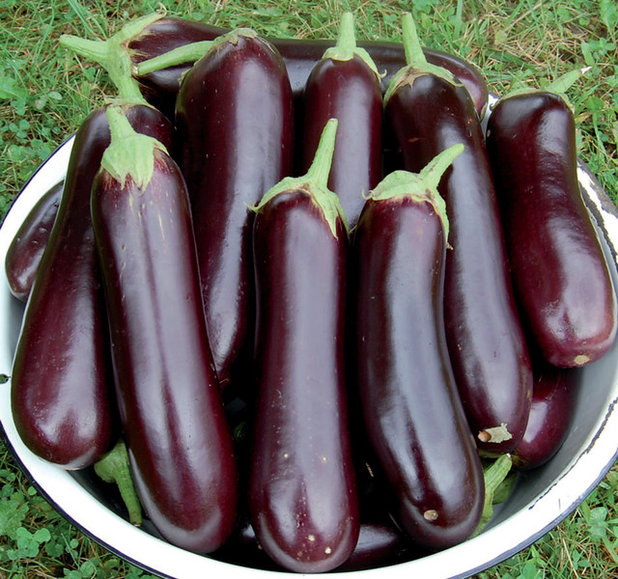
seedsavers.org
5. Eggplants
When to plant: Set out plants when soil temperature hits 70 degrees Fahrenheit (21.1 degrees Celsius) and daytime temperatures are above 65 degrees Fahrenheit (18.3 degrees Celsius); start seeds indoors six to eight weeks before your planting date.
When to harvest: In 62 to 90 days, when the fruits have color but are still shiny
Oval and Asian eggplants add color to both the garden and your meals, and there are more and more varieties available for the home gardener, including dwarf varieties for patios (or if you have few eggplant lovers in your family). Plant in full sun in fertile soil, although not in a spot where you planted eggplants the year before. Provide regular deep water and keep the soil around the plants weeded. You may need to ward off common pests, but good gardening practices will help. When harvesting, cut each fruit off rather than pulling it.
Learn more about growing eggplants
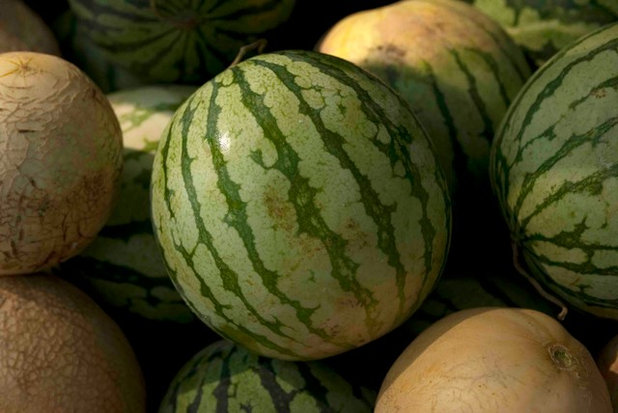
The New York Botanical Garden
6. Melons
When to plant: Put melons in the ground once all danger of frost is past and soil temperature reaches 75 degrees Fahrenheit (23.9 degrees Celsius); you can start seeds indoors one month before.
When to harvest: In 70 to 110 days
Melons want heat and plenty of room to sprawl, making them right at home in a larger garden where the days sizzle in the summer sun. Full sun is, of course, one of their requirements, as are rich soil, good drainage and regular water. Amend the soil a few days before sowing seeds or setting out plants for best results. If you want to grow them vertically, set a very sturdy support structure in place when you plant. Because melons need continuously moist soil, it’s best to grow them in hills and to create a watering basin; if growing in rows, add furrows for watering alongside the plants.
Feed regularly, and keep an eye out for possible pests and diseases. If you’re letting the plants sprawl, place a piece of wood or foam under developing fruits. If you’re growing on a support, provide a cradle to support each plant.
Melons are ready to harvest when their aroma is strong but still sweet and the blossom end is beginning to soften. Cut them at the stems (don’t pull).
Learn more about growing melons
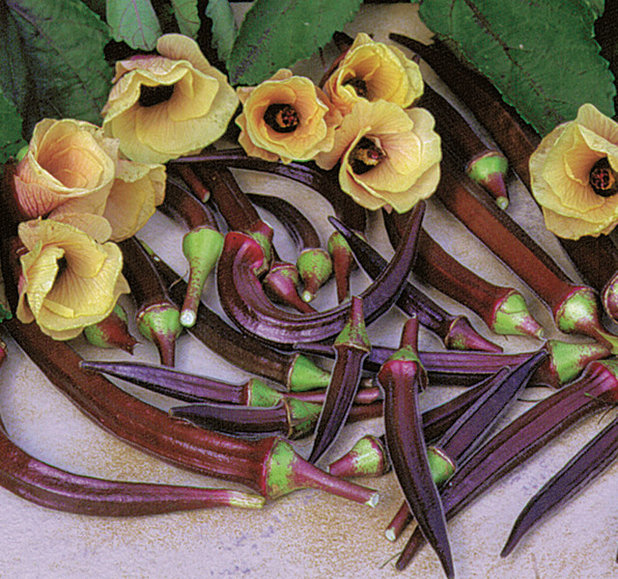 7. Okra
7. Okra
When to plant: Sow seeds when soil temperature hits 70 degrees Fahrenheit (21.1 degrees Celsius), daytime temperatures are at least 85 degrees Fahrenheit (29.4 degrees Celsius) and nighttime temperatures are at least 60 degrees Fahrenheit (15.6 degrees Celsius).
When to harvest: In 50 to 65 days
If your summers are hot and humid, okra will be right at home. Look for a planting site with full sun and neutral, well-drained soil. Keep the soil moist. Bugs generally aren’t a problem, but okra can be prone to some diseases. Using scissors, cut the pods from the plant when they are 2 to 4 inches long. Harvest often to keep the plants producing.
Caution: Wear gloves and long sleeves to protect yourself from the plant’s spines.
Learn more about growing okra
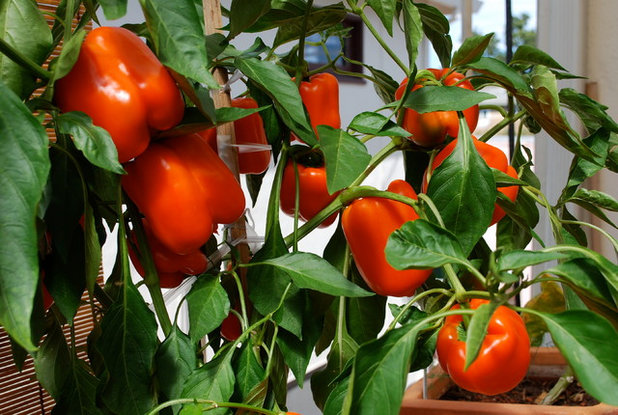
Steve Masley Consulting and Design
8. Peppers
When to plant: Set out plants one week after the last frost date and when nighttime temperatures reach 65 degrees Fahrenheit (18.3 degrees Celsius); start seeds indoors six to eight weeks earlier. Do not plant when nighttime temperatures are over 75 degrees Fahrenheit (23.9 degrees Celsius).
When to harvest: 60 to 120 days after setting out plants
Peppers offer something for everyone, from mild bell peppers that are perfect for salads and snacking to the hot peppers that add flavor and spice to any number of cuisines. They’re also colorful additions to the landscape; in addition to green and red peppers, you can find a range of colors from yellow through purple to almost black.
Choose a sunny site with rich soil; if needed, dig down about 1½ feet and amend poorer soil. Keep the soil moist but not soggy, and feed the plants when they set blossoms. Peppers are fairly hardy. They aren’t as prone to diseases and pests as some other vegetables.
You can begin to harvest once the peppers reach their full size. Bell peppers become sweeter as they change colors, while the flavors of hot peppers can become more complex. Cut with scissors and use gloves when harvesting hot peppers.
Learn more about growing peppers
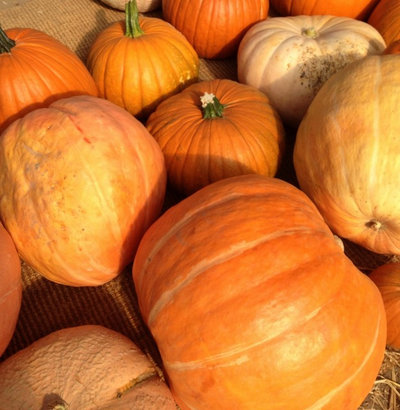
Le jardinet
9. Pumpkins
When to plant: Put pumpkins in the ground once the soil temperature reaches 65 degrees Fahrenheit (18.3 degrees Celsius); start seeds indoors two to three weeks before that date, especially if your growing season is short.
When to harvest: 75 to 125 days
Grow pumpkins for pies and soups, for fall decorations or simply to see just how big you can get them to grow — no matter what your motivation, pumpkins are rewarding additions to the edible garden, even if they do tend to hog the space.
Choose a warm, sunny spot with well-drained, fertile soil and plenty of room for pumpkins to spread out. They also don’t like to be splashed with water, so plant in hills (generally preferred) or in rows with watering furrows alongside, especially if mildew might be a problem. Provide regular water and fertilize the plants once they start to bloom. They’re prone to the same pests and diseases as other squashes.
As pumpkins mature, raise them off the ground by creating a bed of straw or placing them on a piece of foam or other support. Keep growing into autumn; pumpkins can take light frost but should be harvested before the first hard frost. Cut the stem with scissors and place pumpkins in a warm, dry spot to cure.
Learn more about growing pumpkins
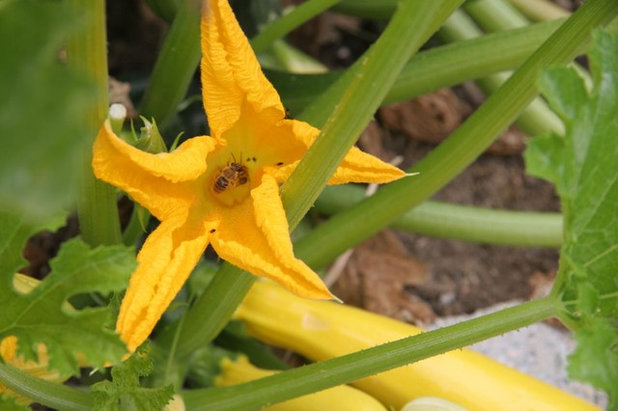
ecocentrix landscape architecture
10. Squashes
When to plant: Sow seeds or set out plants two weeks after the last frost date when the soil temperature is 70 degrees Fahrenheit (21.1 degrees Celsius); start indoors one week before the last frost date.
When to harvest: Summer varieties are usually ready to pick in 45 to 65 days; winter kinds in 60 to 110 days.
These are one of the easiest summer edibles to grow; if they’re happy, they’ll grow and produce quickly. Summer and winter varieties require the same growing conditions. The name difference indicates when that type of squash is ready to eat.
Look for a spot in full sun. Water well after sowing seeds or planting seedlings, then water regularly throughout the growing season. Keep an eye out for pests and diseases. Also keep the fruits of winter varieties off the ground by growing them up a trellis, or placing a board or piece of foam underneath them.
Harvest summer squashes when the fruits reach a usable size, and winter ones when the shell is hard and the vines have dried. Cut the stems; you may want to use gloves since the leaves can irritate your skin. Stay on top of fruit production, especially with zucchini; they seemingly double or triple in size overnight.
Learn more about growing squash
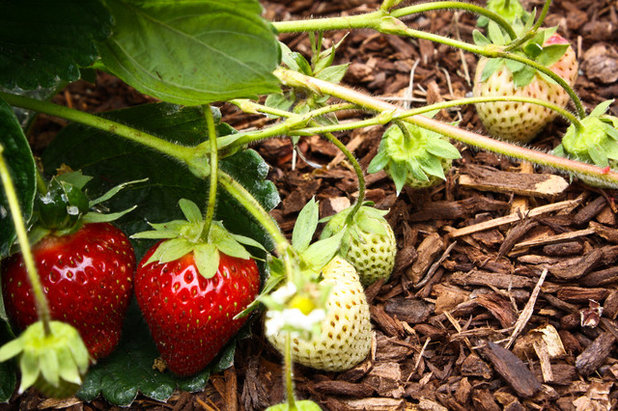
Sage Ecological Landscapes and Nursery
11. Strawberries
When to plant: In cold-winter climates, set out starts three to four weeks before the last frost date. In warm-winter climates, set out starts in winter and early spring.
When to harvest: When berries have turned bright red but aren’t too soft
It’s a wonder strawberries ever make it to the kitchen — they’re just too tempting to eat the minute they’re picked. They’re also easy to fit in any garden. They’re at home in a dedicated vegetable garden, but they do equally well in a garden border or hanging basket as long as their basic needs are met.
Strawberries do well in full sun, and alpine and musk varieties will also handle partial shade. They prefer rich, well-drained soil that’s acidic to neutral, so you may need to amend the soil a few days before planting. Work in fertilizer at the same time. Once planted, provide regular water and pinch off early blooms for the best results.
Strawberries can be subject to a number of pests and diseases. Check with your local nurseries to learn what varieties do best in your area, and follow good gardening practices to keep most pests at bay. Birds will probably be the most troublesome of the pests, so you may want to net the plants as they start to produce. When strawberries turn bright red, do a taste test and begin harvesting.
Learn more about growing strawberries
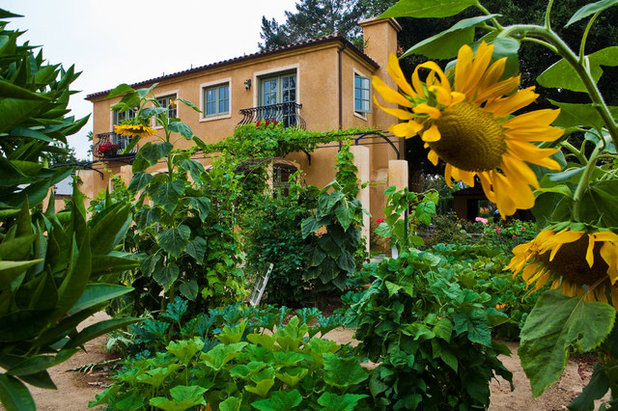
Noel Cross+Architects
12. Sunflowers
When to plant: Sow seeds or set out plants when soil temperature reaches 55 to 60 degrees Fahrenheit (12.8 to 15.6 degrees Celsius).
When to harvest: About 70 to 90 days
Although not always thought of as a “crop,” sunflowers are a great addition to any edible garden, with their bright heads and increasingly varied colors. They attract some pests but are even better at drawing beneficial insects to your space.
As befits their name, sunflowers want full sun for at least six hours a day. They also prefer a spot out of the wind. They do best in good soil, so if yours is poor, work some diluted fertilizer into the soil a few days before sowing seeds or setting out plants. Once planted, provide regular water. Stake the taller varieties, which can reach 16 feet. Beating the birds to the seeds will probably be your biggest challenge once they begin to grow.
Harvest when the seeds are hard and the backs of the flowers are brown, then hang to dry. Or simply leave in place and enjoy the birds that will be drawn to your garden.
Learn more about growing sunflowers
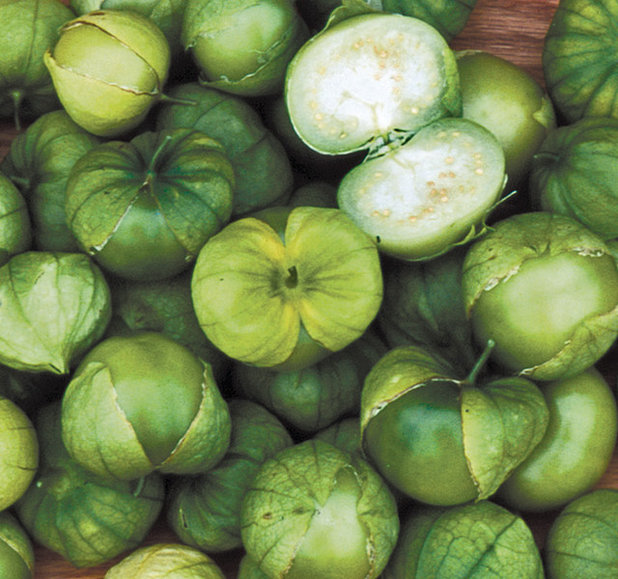 13. Tomatillos
13. Tomatillos
When to plant: Sow seeds or set out plants two to four weeks after the last frost date; start seeds indoors five to eight weeks before that date.
When to harvest: Generally 70 to 120 days after seeds have germinated
This salsa staple will easily fit into an edible garden. It likes full sun, regular water and rich, well-drained soil. You can sow seeds or plant seedlings. If you opt for the latter, bury about two-thirds of the plant in the soil and water deeply. Continue providing regular water throughout the gardening season, and fertilize when the blooms appear. Harvest when the fruit has filled the husk but is still firm and the husk itself has turned brown.
Learn more about growing tomatillos
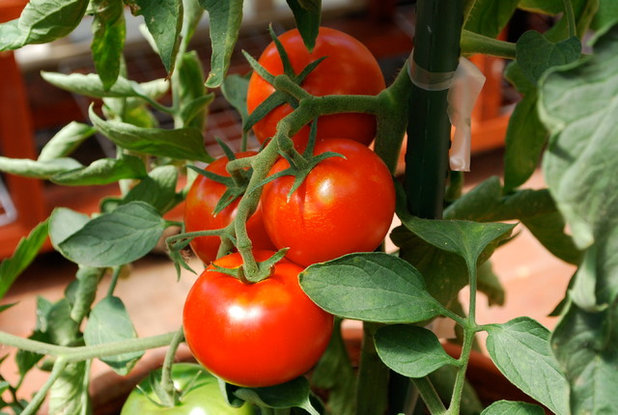
Steve Masley Consulting and Design
14. Tomatoes
When to plant: Set out plants once all danger of frost is past and soil has warmed up; start seeds indoors five to eight weeks before plantings.
When to harvest: 50 to 90 days
What with the heirloom revival, new hybrids in colors from green to purple, and tomato tastings and festivals, tomatoes have acquired celebrity status in the garden.
Like any star, tomatoes have some special needs. They prefer neutral to just slightly acidic soil and full sun for six to eight hours a day. They also want deep watering on a regular schedule, but they need to dry out between those waterings. They’re prone to a variety of diseases.
Even with all these demands, tomatoes still remain summer vegetable favorites. Fortunately, a great deal of growing information and more area-specific varieties than ever are available for every microclimate.
Learn more about growing tomatoes
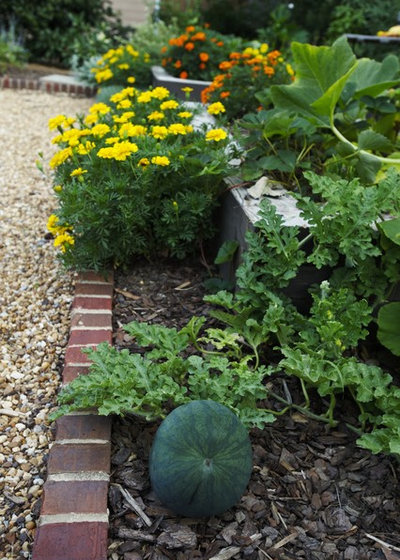
Troy Rhone Garden Design
15. Watermelons
When to plant: Sow seeds or set out plants about two weeks after the last frost when soil temperature reaches 75 degrees Fahrenheit (23.9 degrees Celsius); start seeds indoors up to one month earlier.
When to harvest: In 70 to 95 days
These heat-loving plants require patience, but the melons are worth the wait and the garden space. Look for a spot in full sun with rich soil; amend the soil, then plant in hills for the best results. Keep the soil moist, feed regularly, and watch for pests and diseases. As fruits mature, place a piece of wood or foam underneath them.
Picking a watermelon when it is at its peak takes skill. Start checking when the stem has begun to wither and the underside is changing color. If tapping it produces a “thunk,” it’s good to pick. Cut with a knife or shears.
Learn more about growing watermelons





